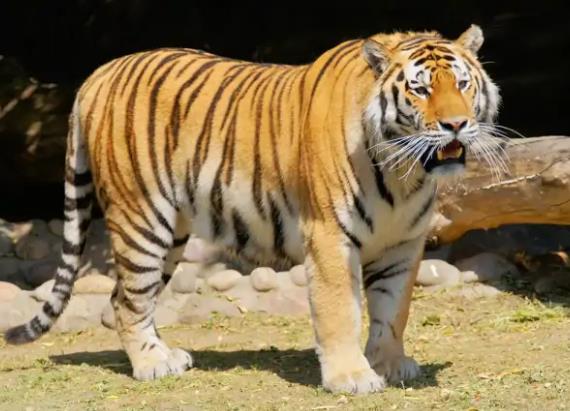tiger
IUCN
LCBasic Information
Feature
One of the largest living cats in the world
Distribution and Habitat
Tigers are currently found in the Indian subcontinent, Southeast Asia and East Asia. Historically, tigers in China were distributed in a vast area from the northeast to south China, southwest and northwest Xinjiang, but they are currently only distributed in some areas where China borders Russia, India, Myanmar and perhaps Laos. Tigers can live in many types of habitats, spanning a wide altitude span from sea level to 3000m above sea level (the Himalayas). In the north, tigers mainly inhabit temperate forests with gentle terrain; in the south, tigers mainly inhabit tropical and subtropical forests and subtropical mountain forests.
Appearance
Tiger is the largest cat in the world. The male head and body length is 189-300cm and the weight is 100-260kg (up to more than 300kg); the female head and body length is 146-177cm and the weight is 75-177kg; the tail length is 72-109cm. The body surface has obvious black stripes, making it easy to identify. The tiger has a muscular body, thick and powerful limbs, a wide head and a long tail. The background color of the coat on the body is rusty yellow to orange or light brown, but the background color of the abdomen, the inside of the limbs and the ventral surface of the tail is white or dirty white. There are numerous thin black stripes from the back to the sides, extending to the limbs and abdomen. There is usually a white area above the eye and an obvious white spot on the back of each ear. The tail is thick, longer than half the length of the head and body, and has black rings on the tail. The black pattern on his forehead resembles the Chinese character for "王", which ma
Details
There are nine species of tigers, namely: Siberian tiger, South China tiger, Bali tiger, Indochinese tiger, Malayan tiger, Javan tiger, Sumatran tiger, Bengal tiger, and Caspian tiger.
China has the largest number of tiger species among the 14 tiger-producing countries in the world, and India has the largest number of tigers in the world, although there is only one type of Bengal tiger. In the mid-20th century, due to deforestation and over-hunting, the number of tigers in India was once reduced to a few hundred. In 1970, India became the first country to legislate tiger protection.

The ancestor of modern tigers is a small carnivore called the "Chinese ancient cat". It appeared on the earth after the Pleistocene about 3 million years ago. It was close to the time when humans appeared, and may have been with humans. Ancestors - Lantian people lived together. As climate change promoted the evolution, differentiation and migration of fauna, tigers gradually spread from their birthplace to western and southern Asia. A branch developing westward passed through Mongolia, Xinjiang and Central Asia and reached northern Iran and the southern Caucasus. But it failed to cross the Arabian Desert into Africa, and it failed to cross the Caucasus Mountains into Europe; the branch that developed southward was divided into two branches, one branch entered the Korean Peninsula, was blocked by the Korean Strait, and failed to set foot on the Japanese Islands; One branch passes through North China, Central China and South China and enters the Indochina Peninsula. After arriving here, it split into two groups. One group went west through Myanmar and Bangladesh and reached the southern tip of the Indian Peninsula. The other group continued southward along the Malaysian Peninsula, crossed the narrow Strait of Malacca, and landed in Sumatra and Java in Indonesia. and islands such as Bali.
In 1973, India promoted the tiger conservation plan, established the tiger as the national animal, and designated more than ten tiger reserves. By 1984, the number of wild tigers had increased from 1,872 in the 1970s to 4,000. By 1989, the number had risen to 4,334.
Little is known about the life history and ecological habits of wild tigers living in southwestern China. According to research on tigers from other tropical areas, they usually mate in January-February, have a gestation period of 90-105 days, and give birth to 2 or 3 cubs per litter. Tigers play an extremely important role and symbolic meaning in traditional Chinese culture. However, over the past century, the population and distribution range of wild tigers in China have declined sharply. Human hunting, lack of prey, and habitat loss are the main reasons behind this.








